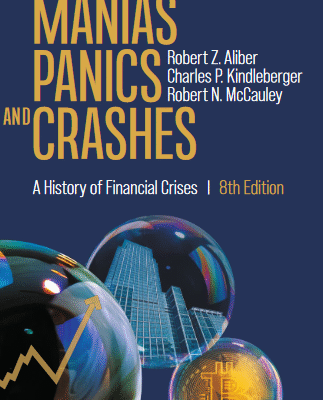

خرید و دانلود نسخه کامل کتاب China, Latin America, and the Global Economy Economic, Historical, and National Issues – Original PDF
64,500 تومان قیمت اصلی 64,500 تومان بود.37,500 تومانقیمت فعلی 37,500 تومان است.
تعداد فروش: 72
Author:
Aaron Schneider · Alessandro Golombiewski Teixeira
Economic and Geopolitical Change The last several decades have been characterized by a heightened period of international integration, creating space for the emergence of new economic and political actors, foremost among them, China (Li 2012). Integration has been driven by policy changes, such as deregulation and liberalization; technological changes, such as information and communi- cation technologies; and geopolitical changes, such as the fall of the Soviet Union and the incorporation of former Soviet states and China into the 4 A. G. TEIXEIRA AND A. SCHNEIDER world market economy (Fukuyama, 1992). Raw materials extracted in one place were transformed into intermediate goods in another, assem- bled into commodities in another, and consumed in yet another, creating a chain of value that encompassed the globe. Globally integrated value chains drew far-flung geographic regions closer together, increased flows of capital, expanded trade, and generated immense wealth. Among the greatest beneficiaries of the expansion, in terms of a shifting global role, was China, which had opened its economy in the 1980s and reoriented toward export-oriented industrialization, rapidly becoming among the largest economies on the planet.1 Yet, the period of globalization was also fraught with challenges. A transnational capitalist class came to coordinate global value chains, creating a globalized world for the rich, but excluding most of humanity from the benefits (Robinson 2015). Soaring inequality left consumers unable to absorb the commodities generated in the newly productive global without ever larger infusions of credit (Piketty 2017). For a time, Chinese trade surpluses were recycled in Western financial centers to sustain consumer credit, but the crisis of 2008 exposed the vulnerability of bubbles to sustain global value chains dominated by finance (Varoufakis 2015). The early 2000s also exposed the fragility of the unipolar moment of US hegemony after the end of the Soviet Union. Almost as predicted by great power theorists (Kennedy 1989), the US succumbed to a paroxysm of imperial overreach in Afghanistan and Iraq, exhausting its capacity to act unilaterally across the globe. China came to occupy a pivotal role in several regions, certainly in its near neighborhood of East Asia (Li 2010), and quickly came to be among the most important trading partners and sources of capital for regions farther afield, including Latin America (Gallagher and Porzecanski 2010). The world order taking shape since 2009 is marked by several elements of significance when considering Chinese relations with Latin America. First, while China recovered quickly by raising domestic incomes and reorienting some of its production to the home market, Western central 1 The exact placement of China among the top economies of the world depends on the use of nominal GDP, real GDP, GDP at purchasing power parity, or other measures. It is not our interest here to lead the reader into a discussion that has agitated the current academic circles, but to say China has grown significantly and markedly among all countries in recent decades. 1 INTRODUCTION 5 banks sought to prop up finance-dominated value chains and stock markets with massive infusions of credit. Second, much of this cash went into new technologies, as platforms and data came to dominate drivers of growth, with questionable impacts on democracy (Zuboff 2020) and employment (Acemoglu 2021). By reinvesting its trade surpluses, China joined in the reorientation toward technology, lifting research and devel- opment to bring its own economy to the edge of the tech frontier and investing in infrastructure to link other countries, including Latin America, into value chains coordinated and led by Chinese actors (Wen 2020). It is in this context that Latin American and Caribbean relations with China fit into a new world order. It is not clear that China poses or wishes to pose a challenge to US dominance in Latin America, and it would appear that China most of all does not wish to challenge the capi- talist order in the region (Bernal-Meza and Xing 2020: 4). Yet, Chinese development has propelled its relations with Latin America in two ways that cannot help but alter international relations. First, Latin America and the Caribbean have increased their trade, especially the export of raw materials, to satisfy expanding Chinese industrialization and consump- tion. Second, by penetrating Latin America, China occupies space that the United States previously dominated but has neglected in recent decades (Ellis 2009). In the last decade, Chinese GDP per capita has expanded an average of 9.9% annually. This expansion has drawn on Latin American and Caribbean raw materials, and engagement has rapidly deepened in other ways as well. In addition to becoming the top or among the top trading partner of the countries in the region, China is also one of the most important investors. Part of the expansion in investment can be under- stood as China’s need to “go out,” with an important result that Latin American countries have alternative sources of finance, bearing different conditionalities, and perhaps providing greater policy space for individual Latin American and Caribbean governments (Jenkins 2019). President Xi Jinping signaled Chinese eagerness to deepen relations with Latin America during the inauguration of the Forum of China and the Community of Latin American and the Caribbean States (China- CELAC Forum) in 2014 in Brasilia. He promised Chinese commitment to boost trade, investment, and technological cooperation, noting that China’s demand for agricultural products, mining, and investment in industry, infrastructure and energy will remain high in the coming



نقد و بررسیها
هنوز بررسیای ثبت نشده است.